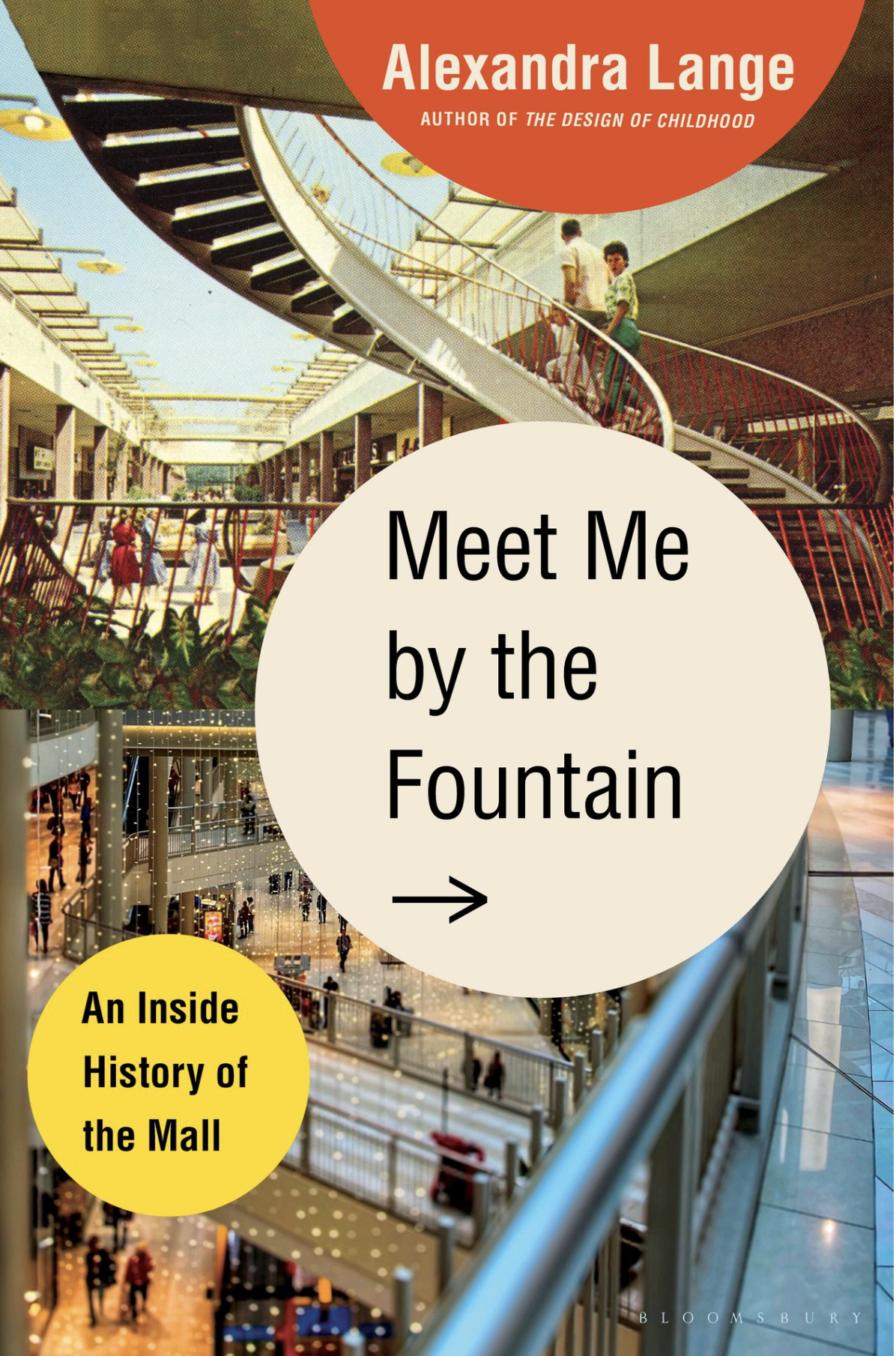[ad_1]
 Satisfy Me by the Fountain: An Within Heritage of the Mall by Alexandra Lange
Satisfy Me by the Fountain: An Within Heritage of the Mall by Alexandra Lange
Published in June of 2022.
Can we study just about anything about the future of the university from the heritage of the browsing mall?
If any classes connecting malls to faculties are to be found, the setting up location is Meet up with Me by the Fountain. It is tricky to imagine a extra entire social, architectural, cultural, financial, or cross-nationwide comparison of searching malls than this ebook gives.
For some, all the element, theorizing, and examination of the mall’s heritage, relevancy, and meaning may be a little bit too significantly. For those seeking for clues about how the university could possibly evolve post-pandemic, the deep dive into malls that Meet Me by the Fountain gives is helpful.
The location any guide on the purchasing mall should commence – and the place Meet up with Me by the Fountain begins — is the useless and dying shopping mall. Lange, a design critic, begins the e-book with a visit to the nevertheless virtually vacant American Aspiration shopping mall in NJ. This 3 million square foot behemoth (with 33,000 parking spaces) has a extensive, troubled, and intriguing heritage.
What American Aspiration will finally evolve to is now unidentified. What we know is that the common mall, situated in the suburbs and created mostly all-around the perceived wants of white middle-class purchasers, is a factor of the earlier.
Satisfy Me by the Fountain excels in unpacking how and why builders in excess of-constructed and around-produced procuring malls, to the issue exactly where the US turned severely overmalled. As Lange relates, there are today 24 sq. feet of searching area for every man or woman in The usa. In the British isles, that range is 4.6. China, the international heart of new mega-mall construction, only has 2.8 square ft of browsing per particular person.
In the US, malls kept getting developed long immediately after either populace progress or client demand from customers could justify them. By 2017, there were being around 116,000 purchasing facilities unfold throughout the US. Numerous have been dying, and the die-off accelerated during the pandemic.
How is a shopping mall like a college?
What does the mall-killing increase of e-commerce notify us about the prospective for on-line understanding to cannibalize the actual physical campus?
One of the points that Lange can make about the mall is that virtually absolutely nothing about its long run turned out the way its creators predicted. The characteristics, features, and patterns that mall homeowners imagined would encourage purchasers finished up repelling them.
There is little drive among people to drive to suburban indoor malls that market generic products from nationwide merchants. The transactional factors of shopping can be accomplished far more competently online.
The shopping malls that prosper provide a mixture of combined-use routines, from dining to buying to recreation. Progressively, these are outside malls that replicate more of an city come to feel. Some even involve housing.
The irony, of training course, is that the shopping mall in the 1970s and 1980s was blamed for assisting to destroy the downtown urban purchasing main. As the suburban mall has fallen out of favor, its survival is dependent on figuring out how to re-integrate those activities of dwelling, doing the job, recreating, and procuring that it did so much to separate.
There is just about every probability that those of us in bigger schooling will be no superior at predicting our potential than the builders and house owners of malls were a ten years or two in the previous. If shopping mall owners had regarded what they needed to stay resilient in the confront of technological, demographic, and aggressive variations, they would have completed those things.
What we can learn from purchasing malls is the necessity of letting go of what the moment worked. Profitable malls constantly pivot. Domestically-owned merchants and dining places switch anchor merchants and countrywide models. The moment occupied by office outlets, spaces turn out to be libraries, federal government workplaces, and meals stalls.
Like shopping malls, the physical campus will not disappear. It will, nonetheless, seem and purpose incredibly differently in the a long time to appear than it does currently.
Items we at the time did at the mall or campus, like shopping and mastering, can be accomplished on the web. We will benefit from the bodily spaces in which men and women obtain, be these spaces malls or campuses, to do things that can’t be finished digitally.
Will we see extra university lecture rooms turning into housing and recreation spaces?
May well we arrive to campus to socialize and connect fairly than executing the heads-down centered function of academia? And if so, how will our campuses evolve to accommodate the need for teams to assemble but do so in means that are flexible in the direction of an unpredictable public overall health context?
Studying Meet up with Me by the Fountain can offer a single aspect of the puzzle in our efforts to build a distinctive mentality about the potential of actual physical areas.
If examining and talking about browsing malls will assistance us converse about the foreseeable future of the college as a physical location, count me in.
What are you studying?
[ad_2]
Source link


More Stories
Rethinking Traditional Methods in Education Systems
The Importance of Emotional Learning in Education
The Role of AI in Revolutionizing Education